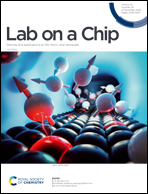Detection of airborne pathogens with single photon counting and a real-time spectrometer on microfluidics
Abstract
The common practice for monitoring pathogenic bioaerosols is to collect bioaerosols from air and then detect them, which lacks timeliness and accuracy. In order to improve the detection speed, here we demonstrate an innovative airflow-based optical detection method for directly identifying aerosol pathogens, and built a microfluidic-based counter composite spectrometer detection platform, which simplifies sample preparation and collection detection from two steps to one step. The method is based on principal component analysis and partial least squares discriminant analysis for particle species identification and dynamic transmission spectroscopy analysis, and single-photon measurement is used for particle counting. Compared with traditional microscopic counting and identification methods, the particle counting accuracy is high, the standard deviation is small, and the counting accuracy exceeds 92.2%. The setup of dynamic transmission spectroscopy analysis provides high-precision real-time particle identification with an accuracy rate of 93.75%. As the system is further refined, we also foresee potential applications of this method in agricultural disease control, environmental control, and infectious disease control in aerosol pathogen detection.



 Please wait while we load your content...
Please wait while we load your content...